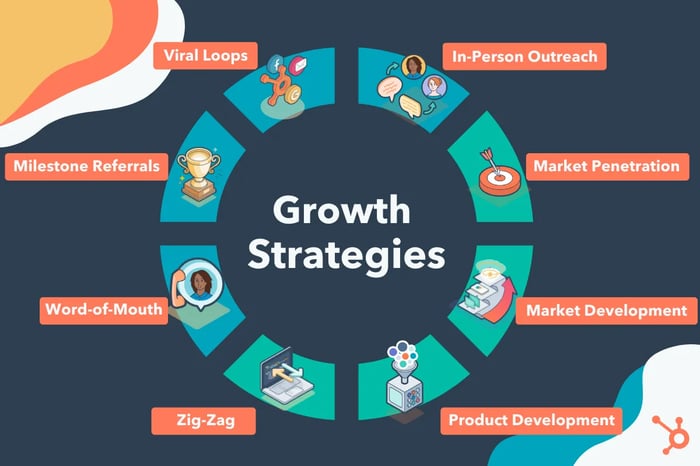Develop a Growth Strategy

Developing a growth strategy involves a structured process that considers various factors, both internal and external, to identify opportunities and create a plan for expansion. Here are the steps to develop a growth strategy for your organization:
-
Conduct a SWOT Analysis:
- Objective: Evaluate the organization's internal strengths and weaknesses, as well as external opportunities and threats.
- Actions:
- Identify strengths in products, services, brand, and resources.
- Recognize weaknesses in processes, resources, or market positioning.
- Analyze opportunities in the market and external environment.
- Evaluate potential threats from competitors, market trends, or regulatory changes.
-
Define Clear Objectives:
- Objective: Clearly articulate specific and measurable growth objectives.
- Actions:
- Establish SMART goals (Specific, Measurable, Achievable, Relevant, Time-bound).
- Align objectives with the overall mission and vision of the organization.
-
Understand Your Market:
- Objective: Gain insights into customer needs, market trends, and competitive dynamics.
- Actions:
- Conduct market research to identify customer preferences.
- Analyze industry trends and emerging opportunities.
- Evaluate the competitive landscape and identify market gaps.
-
Choose the Right Growth Strategy:
- Objective: Select the most suitable growth strategy or combination of strategies.
- Actions:
- Consider options such as market penetration, market development, product development, diversification, mergers and acquisitions, or strategic partnerships.
- Evaluate the feasibility and risks associated with each strategy.
-
Develop a Value Proposition:
- Objective: Clearly define the unique value your organization brings to customers.
- Actions:
- Understand your competitive advantage.
- Communicate the value proposition effectively to the target audience.
-
Invest in Innovation:
- Objective: Foster a culture of innovation to stay ahead of market trends.
- Actions:
- Allocate resources to research and development.
- Encourage employee creativity and idea generation.
-
Build Strategic Alliances:
- Objective: Collaborate with other businesses to leverage shared resources.
- Actions:
- Identify potential partners or collaborators.
- Establish mutually beneficial relationships through partnerships, joint ventures, or alliances.
-
Invest in Marketing and Branding:
- Objective: Increase brand awareness and attract new customers.
- Actions:
- Develop a comprehensive marketing strategy, including digital marketing, social media, and content marketing.
- Invest in advertising campaigns to reach a broader audience.
-
Optimize Operations:
- Objective: Streamline internal processes to enhance efficiency.
- Actions:
- Assess and improve supply chain management.
- Enhance production processes to reduce costs.
-
Assess Financial Resources:
- Objective: Evaluate the organization's financial capacity for implementing the growth strategy.
- Actions:
- Analyze the budget available for growth initiatives.
- Explore funding options, if necessary.
-
Monitor and Adjust:
- Objective: Regularly monitor progress and adjust strategies as needed.
- Actions:
- Establish key performance indicators (KPIs) to measure success.
- Gather feedback from stakeholders and the market.
- Be prepared to adapt to changing circumstances.
-
Employee Engagement:
- Objective: Ensure that the team is aligned with growth objectives.
- Actions:
- Communicate the growth strategy to employees.
- Provide necessary training and support.
-
Risk Management:
- Objective: Identify and mitigate potential risks associated with the growth strategy.
- Actions:
- Develop contingency plans for potential challenges.
- Assess and manage risks related to market fluctuations or regulatory changes.
-
Communicate and Celebrate Success:
- Objective: Keep stakeholders informed about progress and celebrate achievements.
- Actions:
- Communicate milestones and successes.
- Boost morale and maintain momentum within the organization.
-
Review and Refine:
- Objective: Continuously review the growth strategy and refine it based on feedback and results.
- Actions:
- Conduct periodic reviews to assess the effectiveness of the strategy.
- Make adjustments to align with changing market conditions or organizational priorities.
By following these steps, organizations can systematically develop a growth strategy that aligns with their goals, leverages their strengths, and addresses potential challenges. It's important to involve key stakeholders, including employees, throughout the process to ensure buy-in and a collaborative approach to growth.
Thank you.
